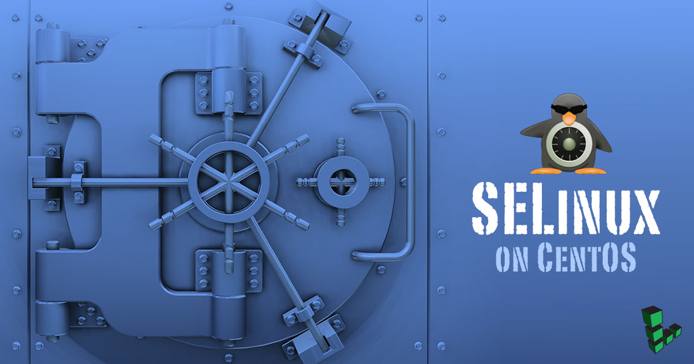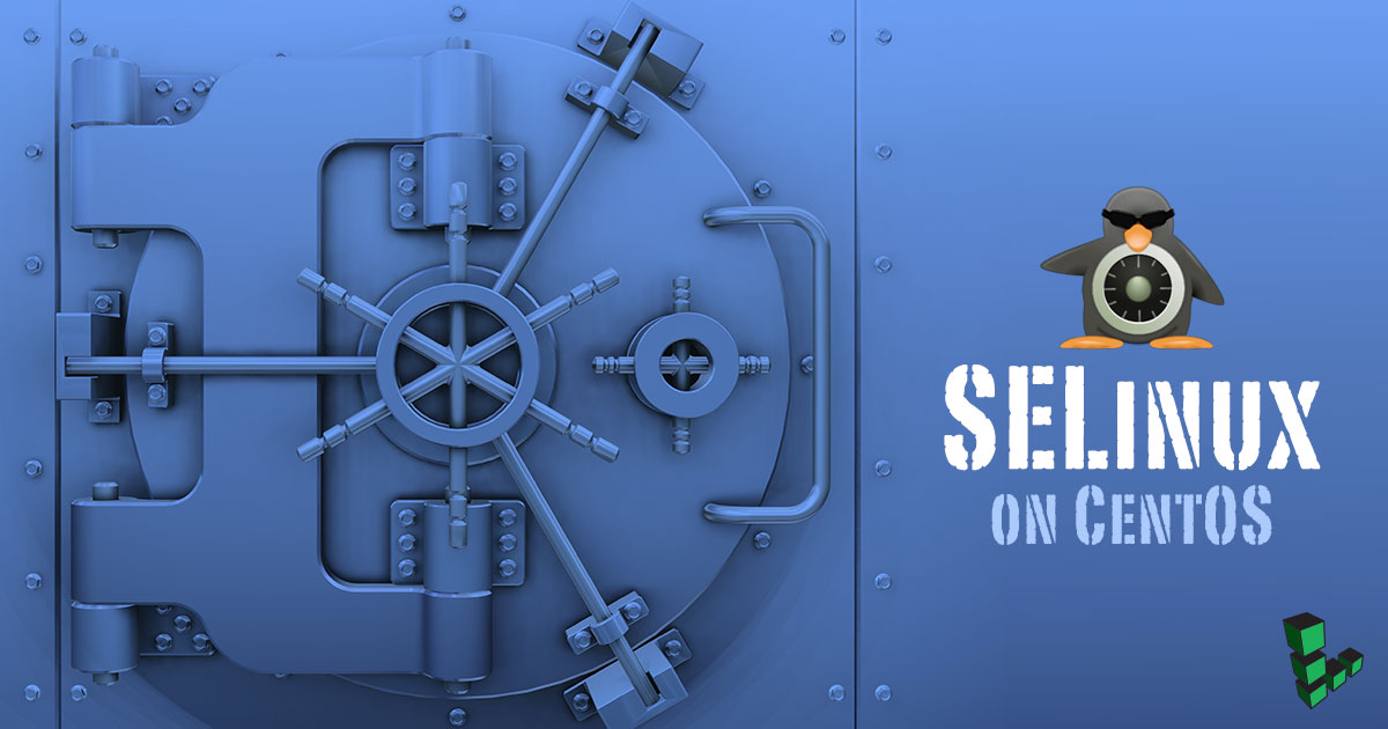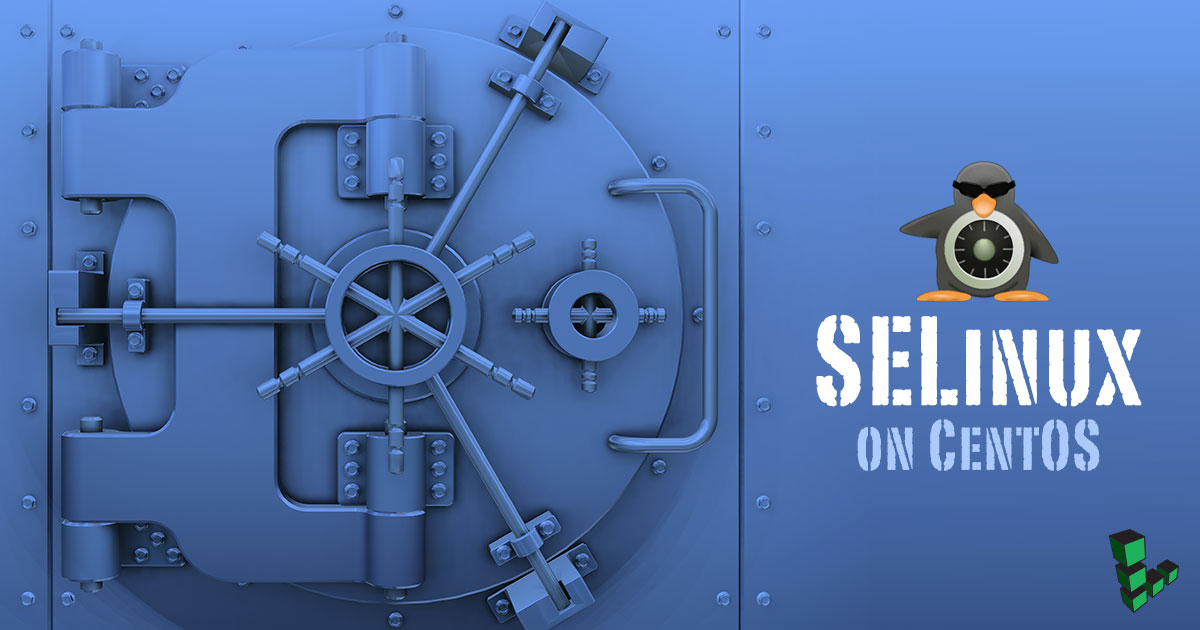Getting Started with SELinux on CentOS 7
Traducciones al EspañolEstamos traduciendo nuestros guías y tutoriales al Español. Es posible que usted esté viendo una traducción generada automáticamente. Estamos trabajando con traductores profesionales para verificar las traducciones de nuestro sitio web. Este proyecto es un trabajo en curso.



SELinux is a Mandatory Access Control (MAC) system, developed by the NSA. SELinux was developed as a replacement for Discretionary Access Control (DAC) that ships with most Linux distributions.
The difference between DAC and MAC is how users and applications gain access to machines. Traditionally, the command sudo gives a user the ability to heighten permissions to root-level. Root access on a DAC system gives the person or program access to all programs and files on a system.
A person with root access should be a trusted party. But if security has been compromised, so too has the system. SELinux and MACs resolve this issue by both confining privileged processes and automating security policy creation.
SELinux defaults to denying anything that is not explicitly allowed. SELinux has two global modes, permissive and enforcing. Permissive mode allows the system to function like a DAC system, while logging every violation to SELinux. The enforcing mode applies a strict denial of access to anything that isn’t explicitly allowed. To explicitly allow certain behavior on a machine, you, as the system administrator, have to write policies that allow it. This guide provides a brief and basic introduction to commonly used commands and practices for SELinux system administration.
Before You Begin
Ensure that you have followed the Getting Started and Securing Your Server guides.
Note This guide is written for a non-root user. Commands that require elevated privileges are prefixed withsudo. If you’re not familiar with thesudocommand, you can check our Users and Groups guide.Update your system:
sudo yum updateNote The Linode kernel does not support SELinux by default. However, all new Linodes running CentOS 7 use the distribution provided kernel, which has SELinux enabled by default.
If your system is running a Linode kernel, you will need to change to an upstream kernel in order to use SELinux. See the How to Change Your Linode’s Kernel for more steps. Once you’re kernel is set to the upstream kernel, continue on with the steps in this guide.
Install Supporting SELinux Packages
In this section, you will install various SELinux packages that will help you when creating, managing, and analyzing SELinux policies.
Verify which SELinux packages are installed on your system:
sudo rpm -aq | grep selinuxA newly deployed CentOS 7 Linode should have the following packages installed:
libselinux-2.5-14.1.el7.x86_64 selinux-policy-3.13.1-252.el7_7.6.noarch selinux-policy-targeted-3.13.1-252.el7_7.6.noarch libselinux-utils-2.5-14.1.el7.x86_64 libselinux-python-2.5-14.1.el7.x86_64Install the following packages and their associated dependencies:
sudo yum install policycoreutils policycoreutils-python setools setools-console setroubleshootpolicycoreuitlsandpolicyoreutils-pythoncontain several management tools to administer your SELinux environment and policies.setoolsprovides command line tools for working with SELinux policies. Some of these tools include,sediffwhich you can use to view differences between policies,seinfoa tool to view information about the components that make up SELinux policies, andsesearchused to search through your SELinux policies.setools-consoleconsists ofsediff,seinfo, andsesearch. You can issue the--helpoption after any of the listed tools in order to view more information about each one.setroubleshootsuite of tools help you determine why a script or file may be blocked by SELinux.
Optionally, install
setroubleshoot-serverandmctrans. Thesetroubleshoot-serverallows, among many other things, for email notifications to be sent from the server to notify you of any policy violations. Themctransdaemon translates SELinux’s output to human readable text.
SELinux States and Modes
SELinux States
When SELinux is installed on your system, it can be either enabled or disabled. By default, the CentOS 7 image provided by Linode has SELinux in an enabled state.
To disable SELinux, update your SELinux configuration file using the text editor of your choice. Set the
SELINUXdirective todisabledas shown in the example.- File: /etc/selinux/config
1 2 3 4 5 6 7 8 9 10 11# This file controls the state of SELinux on the system. # SELINUX= can take one of these three values: # enforcing - SELinux security policy is enforced. # permissive - SELinux prints warnings instead of enforcing. # disabled - No SELinux policy is loaded. SELINUX=disabled # SELINUXTYPE= can take one of three values: # targeted - Targeted processes are protected, # minimum - Modification of targeted policy. Only selected processes are protected. # mls - Multi Level Security protection. SELINUXTYPE=targeted
Reboot your Linode for the changes to take effect:
sudo rebootConnect to your Linode via SSH (replace
192.0.2.0with your own Linode’s IP address) and verify your SELinux installation’s status:ssh example_user@192.0.2.0 sudo sestatusIts output should display
disabledSELinux status: disabled
SELinux Modes
When SELinux is enabled, it can run in either enforcing or permissive modes.
SELINUX directive set to enabled, then reboot your system, and SSH back into your Linode. These steps are outlined in the SELinux States section of the guide.In enforcing mode, SELinux enforces its policies on your system and denies access based on those policies. Use the following command to view SELinux policy modules currently loaded into memory:
sudo semodule -lPermissive mode does not enforce any of your SELinux policies, instead, it logs any actions that would have been denied to your
/var/log/audit/audit.logfile.You can check which mode your system is running by issuing the following command:
sudo getenforceTo place SELinux in permissive mode, use the following command:
sudo setenforce 0Permissive mode is useful when configuring your system, because you and your system’s components can interact with your files, scripts, and programs without restriction. However, you can use audit logs and system messages to understand what would be restricted in enforcing mode. This will help you better construct the necessary policies for your system’s user’s and programs.
Use the
sealertutility to generate a report from your audit log. The log will include information about what SELinux is preventing and how to allow the action, if desired.sudo sealert -a /var/log/audit/audit.logThe output resembles the example, however, it varies depending on the programs and configurations on your system. The example was generated using a Linode running the Apache webserver with a virtual hosts configuration.
SELinux is preventing /usr/sbin/httpd from write access on the directory logs. ***** Plugin httpd_write_content (92.2 confidence) suggests *************** If you want to allow httpd to have write access on the logs directory Then you need to change the label on 'logs' Do # semanage fcontext -a -t httpd_sys_rw_content_t 'logs' # restorecon -v 'logs'To allow
/usr/sbin/httpdwrite access to the directory logs, as shown in the output, you can execute the suggested commands,semanage fcontext -a -t httpd_sys_rw_content_t 'logs'andrestorecon -v 'logs'.
SELinux Context
SELinux marks every single object on a machine with a context. Every file, user, and process has a context. The context is broken into three parts: user, role, and type. An SELinux policy controls which users can get which roles. Each specific role places a constraint on what type of files that user can access. When a user logs in to a system, a role is assigned to the user as seen in the ls -Z example, the output unconfined_u is a user role.
Create a directory in your home folder:
mkdir ~/example_dirPrint the SELinux security context of your home folder’s directories and files:
ls -Z ~/The output is similar to:
drwxrwxr-x. example_user example_user unconfined_u:object_r:user_home_t:s0 example_dirThe SELinux specific information is contained in the
unconfined_u:object_r:user_home_t:s0portion, which follows the following syntax:user:role:type:level. To learn more about users, roles, and related access control, see the CentOS SELinux documentation.
SELinux Boolean
An SELinux Boolean is a variable that can be toggled on and off without needing to reload or recompile an SELinux policy.
You can view the list of Boolean variables using the
getsebool -acommand. Pipe the command throughgrepto narrow down your results.sudo getsebool -a | grep "httpd_can"You will see a similar output:
httpd_can_check_spam --> off httpd_can_connect_ftp --> off httpd_can_connect_ldap --> off httpd_can_connect_mythtv --> off httpd_can_connect_zabbix --> off httpd_can_network_connect --> off httpd_can_network_connect_cobbler --> off httpd_can_network_connect_db --> off httpd_can_network_memcache --> off httpd_can_network_relay --> off httpd_can_sendmail --> offYou can change the value of any variable using the
setseboolcommand. If you set the-Pflag, the setting will persist through reboots. If, for example, you want to allow HTTPD scripts and modules to connect to the network, update the corresponding boolean variable.sudo setsebool -P httpd_can_network_connect ONWhen viewing a list of your boolean variables, you should now see that it is set to
ON.sudo getsebool -a | grep "httpd_can"httpd_can_check_spam --> off httpd_can_connect_ftp --> off httpd_can_connect_ldap --> off httpd_can_connect_mythtv --> off httpd_can_connect_zabbix --> off httpd_can_network_connect --> on httpd_can_network_connect_cobbler --> off httpd_can_network_connect_db --> off httpd_can_network_memcache --> off httpd_can_network_relay --> off httpd_can_sendmail --> off
Next Steps
This guide provides a brief and basic introduction to SELinux administration. You can now take a deeper dive into SELinux by consulting some of the resources include in the More Information section of this guide.
More Information
You may wish to consult the following resources for additional information on this topic. While these are provided in the hope that they will be useful, please note that we cannot vouch for the accuracy or timeliness of externally hosted materials.
This page was originally published on

